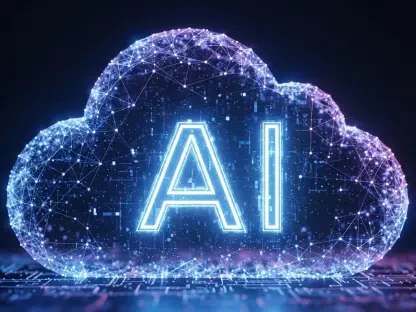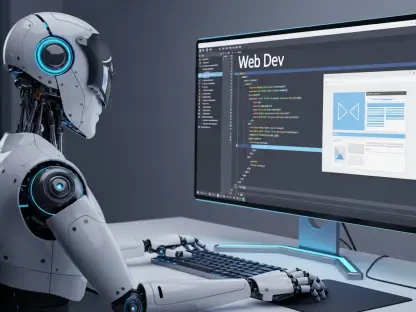AI tools are quickly becoming popular in software development, and for good reason. Developer tasks are often structured, making them a good fit for AI enhancements. Many companies report that these programs increase productivity by more than 30%. While results may vary, software development is one area where Generative AI has shown clear and measurable returns on investment.
Currently, the focus is primarily on code generation modules, which can overshadow other emerging solutions throughout the software development process. These products not only aid in writing code but also enhance efficiency in other areas of work. This article examines what is still needed for complete automation and discusses possible challenges that may arise from adopting these new services.
Why AI and Developers Are a Dream Team
Software engineering relies on logic, structure, and repetition, making it a great fit for AI support. Here are ways AI can improve software development:
Breaking Down Problems: Coding means dividing complex issues into smaller, manageable objectives, just like modern AI systems do. AI can help by tackling each part of a project, making it easier to automate the work.
Access to Large Amounts of Data: AI works best with extensive datasets, and software development offers numerous opportunities for this. With billions of lines of publicly available code, AI can learn patterns and best practices. This large dataset helps AI improve as new examples are added.
Rules and Decisions: Software development mixes structured tasks with creative choices. AI can handle predictable assignments, such as fixing syntax errors and formatting code, freeing developers to focus on more complex design and architectural choices. Over time, AI can learn from these choices.
Reusable Parts: Modern programming utilizes reusable modules, such as open-source libraries, to facilitate code reuse. AI can quickly identify, combine, and integrate these components, thereby accelerating the development process. Instead of starting from scratch, AI can build upon existing solutions to achieve results more quickly.
Testing and Feedback: Coding allows for immediate testing. AI-generated code can be tested and improved in real time, with clear results guiding changes. This process benefits from automated testing environments, ensuring efficient updates and reliable results.
Game-Changing AI Tools You Need to Know
While code generation often gets a lot of attention, many other modules in the software development process can create important efficiencies and deserve recognition.
1. Smarter Code Generation with AI
AI tools can suggest code completions and create snippets based on natural language descriptions. This speeds up development, reduces repetitive coding tasks, and enables developers to focus on more important work while staying productive.
2. Automated Testing and Quality Assurance
Code testing tools automate the creation of new tests, prioritize existing ones, and check test coverage. By simulating real-world scenarios and supporting continuous testing, these programs help developers catch problems early and reduce the need for manual checks.
3. Intelligent Code Review and Collaboration
AI code review apps enhance the review process by automatically identifying code quality issues, coding standards violations, and potential bugs. This enables reviewers to focus on more significant changes, enhancing code quality, minimizing errors, and expediting release cycles.
4. Built-In Code Security and Vulnerability Scanning
AI-powered security solutions scan for vulnerabilities and known security issues, providing fixes directly within developers’ workflows. By embedding security checks into fast-paced development environments, teams can maintain robust protection without slowing down progress.
5. Predictive Maintenance and Technical Debt Reduction
For code maintenance, AI tools identify and resolve outdated dependencies, technical debt, and refactoring requirements. These capabilities enable businesses to maintain strong, scalable codebases while minimizing manual maintenance and long-term risk.
6. AI-Driven Performance and Load Testing
In performance and load testing, AI simulates heavy usage, evaluates system behavior, and detects bottlenecks that could hinder scalability. Developers can utilize these insights to optimize their applications for enhanced stability under various workloads.
7. Automated Documentation and Knowledge Management
AI simplifies documentation by automatically generating in-line comments, Application Programming Interface descriptions, and full documentation from code. This provides development teams with up-to-date records and project histories, eliminating the need for extra manual effort.
8. Contextual Code Search and Discovery
AI-driven code search engines enhance productivity by delivering contextual and accurate results, surpassing basic keyword matching. Developers can quickly locate relevant code snippets, functions, and libraries. It saves time and improves efficiency in large or complex projects.
AI Tools, Three Flavors
The rising effectiveness of new software development modules is primarily due to the enhanced capabilities of large language models. Nonetheless, these programs vary significantly in their impact on the software development lifecycle.
Co-pilots serve as AI assistants, typically available as a chat feature within a developer’s workspace or integrated development environment. Their job is to help developers improve their work processes without completely taking over or automating every task. Many tools for writing and testing code require minimal background information to function effectively. They can be used on a single platform.
On the other hand, agents work mostly independently, managing complex objectives from start to finish while allowing developers to handle other responsibilities. For instance, when an agent is tasked with fixing a bug, it requires more than just knowing where the issue is. It needs to understand the root cause, the bug’s impact on the project, possible effects of a fix, and other related details. To gather this information, an agent examines sources such as Jira tickets, specific sections of the code, and other relevant project data.
The last group of solutions includes foundation models, which are large language models trained specifically with coding data and engineering tasks. Some people argue that services like Microsoft Copilot rely only on ChatGPT instead of a model trained with code-related data. In response, products like Magic, Poolside, and Argument claim their unique feature lies in the model layer, which is fully integrated with the applications users see.
The Road Ahead for AI in Development
Developer tools encounter numerous challenges that hinder their reliable operation from start to finish. A key issue is the necessity for efficient methods to deliver the appropriate context without impeding the process. This can be accomplished through fine-tuning or by utilizing Retrieval-Augmented Generation. Fine-tuning can be expensive, and there’s a chance the model could become outdated without regular updates. While it improves context by pulling snippets from the codebase, it has its own difficulties.
Currently, agents can automate only about 20-25% of tasks, highlighting the challenge of expanding their capabilities to handle entire coding workflows. One solution is code planning, which involves creating specifications that help agents set goals, plan features, and outline the implementation process. Another approach focuses on enhancing the reasoning capabilities of models, which may offer greater benefits than simply training or fine-tuning with coding data.
Increasing developer productivity quickly may cause problems later. For instance, backend systems may not be able to keep up with the faster development pace. New products, such as Fireproof Storage, are being developed to address these issues. They help developers build applications directly in the browser without needing immediate backend support. This enables quick prototyping and minimizes setup time.
It’s important not to overlook the technical debt that coding assistants can introduce. With about 84% of developers now relying on AI coding assistants, there is a risk that they may lose their ability to solve problems independently. This reliance can complicate maintenance and lead to security vulnerabilities that require more specialized expertise to address.
Conclusion
AI is no longer just a futuristic concept for software development. It is actively reshaping how code is written, tested, secured, and maintained. From copilots that assist developers to autonomous agents handling complex tasks, AI tools are enhancing productivity, improving quality, and accelerating release cycles.
While challenges such as automation gaps and technical debt remain, organizations that adopt AI thoughtfully can gain a significant competitive edge. The key is to integrate these apps strategically, leveraging their strengths while keeping human expertise at the center of decision-making.
As AI continues to evolve, the software development lifecycle will become faster, smarter, and more collaborative. Teams that embrace these changes early will not only boost efficiency but also unlock new possibilities for innovation and scalability.
In short, the future of development is AI-driven, but successful adoption depends on striking a balance between automation and human judgment, maintaining high-quality standards, and continually optimizing workflows.









